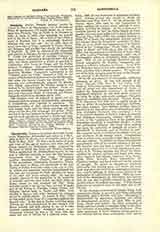

Campana, Pedro, Flemish painter, known in France as Pierre de Champagne, and in Brussels as Pieter de Kempeneer (his actual name), or, as translated into Flemish, Van de Velde, b. at Brussels in 1503; d. there in 1580, after spending the greater part of his life in Spain. He is said to have been a pupil of Raphael, but it is exceedingly doubtful whether this was the case. In his early days he spent some time in Italy, especially in Venice, Rome, and Bologna, and studied very closely the paintings of Raphael. In 1530 he decorated the triumphal arch erected at Bologna for the coronation of Charles V. Under the protection of Cardinal Grimani he went to Spain, sojourned in Seville between 1537 and 1552, and there established a school of painting in conjunction with Louis de Vergas and the Italian sculptor Torrigiano. This school eventually became an academy and numbered among its pupils the illustrious Morales. Campafla’s masterpiece is the “Descent from the Cross”, painted in 1548 for the church of Santa Cruz and removed to the Seville cathedral when the former church was destroyed. This painting was enthusiastically admired by Murillo, who highly appreciated its life-like qualities and desired to be buried below the picture. There are two other paintings by Campaiia in the same cathedral and important works at Carmona and Triana. Campana returned to Brussels about 1564.
His pictures were all painted on panel, and are irreproachable in accurate draftsmanship, admirable in composition, and vigorous in execution: The luminous quality of their color-scheme recalls the best Italian work, and the finest paintings are dignified and life-like, full of strength and power. There are five of his best pictures in the churches of Seville, and his work can also be studied in Berlin and Paris.
GEORGE CHARLES WILLIAMSON

